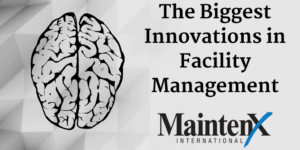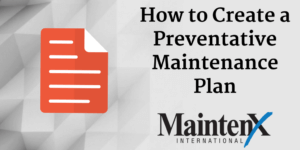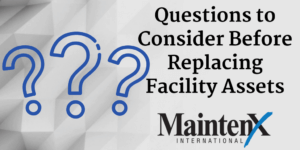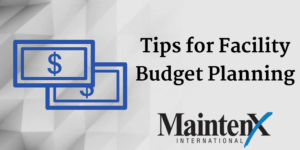
At a recent tradeshow, Bill Schaphorst, VP of New Business Development here at MaintenX International, entered into a discussion with some peers in the Facility Maintenance Service industry. The topic was, work order management technology and the internal challenge our organizations have keeping our dispatchers, technicians, and service managers trained on these various interfaces.
Our team likes to describe the work order management systems as a love-hate relationship. There are so many positives that the portals, systems, and smartphone apps bring to the table but there are also some frustrations that need to be discussed that increase work order administration and management costs.
At MaintenX, we are finding that we are devoting more and more time on each work order towards administrative and technician training so that we can meet client expectations. Our staff and technicians are spending more time working within these systems and due to the high number of solutions out there, become fluent on only a handful and spent a lot of their time reading training manuals.
In total, the MaintenX service team interfaces on a weekly basis with 22 work order management systems and each one is unique with its own requirements for entering and accepting information. There are standard web-based portals, customer developed portals and smartphone apps, with unique login information that we also need to maintain for our team. These systems require ETAs, status information, resolve descriptions and include processes for uploading documents, pictures and invoicing. And today, we are providing the needed interactions for each and every client.
We also have our own work order management software and smartphone App that MaintenX Technicians check-in and out from. With all of these technology solutions that our teams must be familiar with we are devoting more time and resources to developing more processes and tools to properly use these technologies and help our technicians in the field. There have been some frustrations from the team with regard to the challenge of keeping the portfolio of apps and systems straight, along with all of the necessary log-in information and input requirements. To help our team succeed and keep our client commitments, we hired a full-time trainer, Joshua Pound, whose responsibility is to be an expert on our technology and all of our clients work order technology and processes.
Joshua has found that there is a very limited amount of standardization and training available to our team on all of these work order management systems. As stated above, MaintenX is required to use 22 different work order management systems on a regular basis for our customer base and we get graded by our customers on how efficiently we use their system. More often than not, our technicians will only interface with these systems occasionally creating a training opportunity for every work order. We understand that without regular use of a specific system or smartphone app, we cannot expect our technicians to be experts with all of these work order solutions.
These systems also receive updates on a regular basis and customer also change systems from time to time. While we do have some customers and systems that are really good about notifying us of the changes and system updates, we have other systems that provide no additional detail, or training tools to us. Joshua also attends training sessions and webinars so that he can keep our team as up to date as possible on the system changes he is aware of.
While MaintenX is working on growing our database of training tools and resources for our team, we have also noticed that with all of these different systems, there is a lot of responsibility being put on our technicians in the field. We surround our technicians at MaintenX with an administrative team to support them while they are in the field. However, some of these new systems are putting the responsibility of processes that, we would typically place on our admin team onto the technicians. MaintenX technicians are now spending more time checking into different apps and trying to remember what information is required for each unique app/portal, instead of arriving and fixing the problem in their area of expertise. While it is great that our customers can see their information instantly we still have our own system that is required of our technicians, ultimately resulting in duplicated efforts and increased errors by putting this technological responsibility on our trade skill work-force instead of allowing our administrative team to handle these tasks.
As an active member in the Facilities Maintenance Service Industry, we at MaintenX will urge leadership within our Trade Organizations that we start the effort to streamline work order technology and create standards and resources that will make the work order process more productive and efficient for everyone involved.









